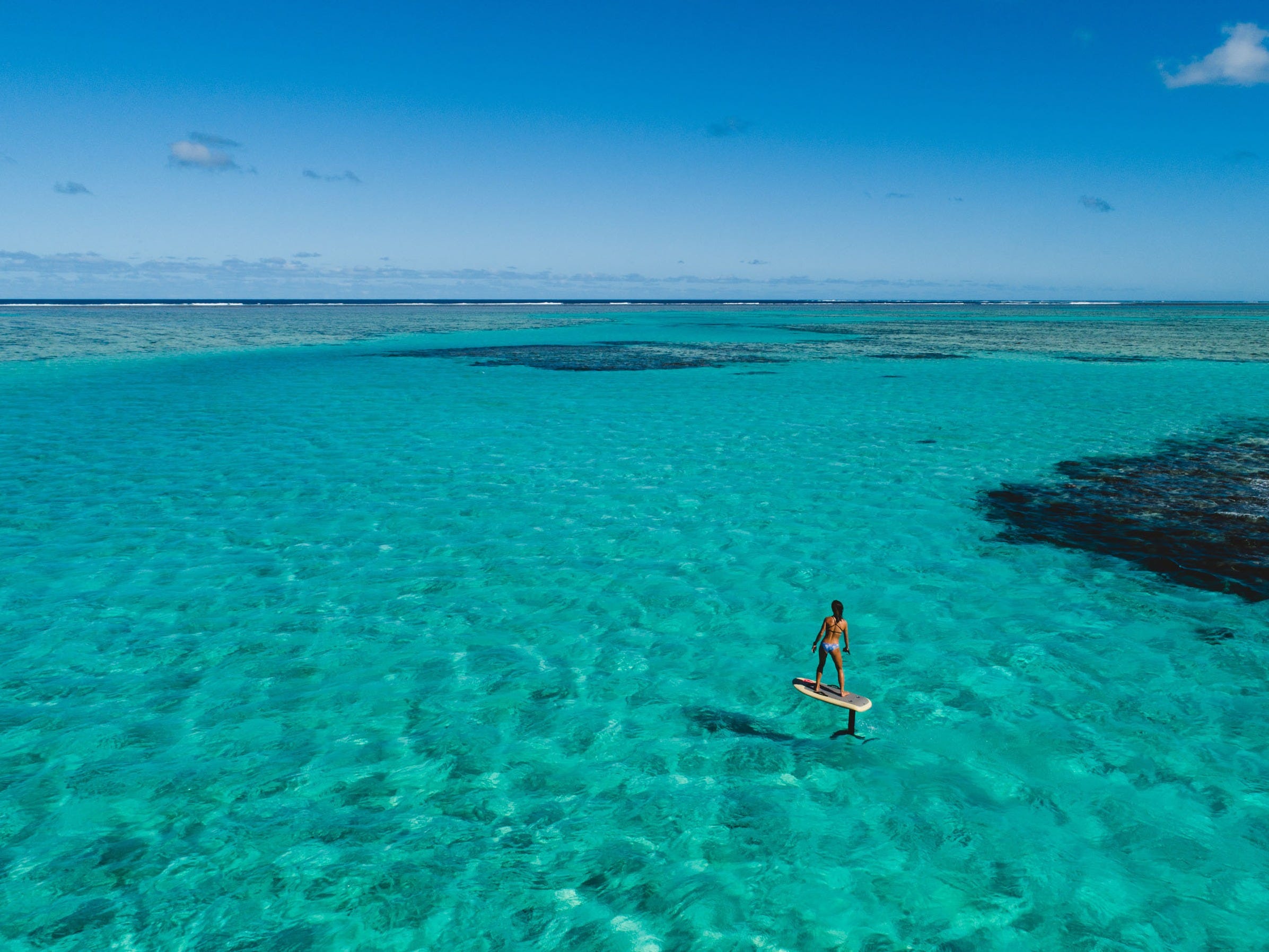- Fliteboard sells the Fliteboard efoil, a battery-powered hydro craft.
- It looks like a surfboard, but moves above the water without relying on waves.
- It can go nearly 30 miles per hour, depending on the customization options.
- Visit Business Insider’s homepage for more stories.
Australian company Fliteboard introduced its first e-surfboard in 2018. Founder David Trewern has always been a fan of surfing and kite sailing, and when he came up with the idea for Fliteboard, he left his current job to work on it seven days a week.
The Fliteboard looks like a surfboard from far away, but the person on it appears to be floating above water. For anyone who can afford the hefty price tag, the Fliteboard is a new way to experience the water. Because it doesn’t rely on wave, the Fliteboard can go in the ocean, rivers, lakes, or anywhere with at least three feet of water.
Here’s how it works.
Fliteboard sells three versions of the device.

Foto: Fliteboard. Source: Fliteboard
The Fliteboard Air is six feet and six inches by 30 inches, an inflatable board meant for beginners.

Foto: Fliteboard. Source: Fliteboard
The standard Fliteboard is in the middle of the company’s offerings, at five feet eight inches by 28 inches. Fliteboard says it’s suitable for beginners and more experiences riders.

Foto: Fliteboard. Source: Fliteboard
Finally, the Fliteboard Pro is the smallest option, five feet by 24 inches, it’s not recommended for beginners.

Foto: Fliteboard. Source: Fliteboard
Each board starts at $12,935, but the price can go up based on other customization options.

Foto: Fliteboard. Source: Jennifer Stenglein
The piece that holds the Fliteboard above the water, the mast, is available in two sizes.

Foto: Fliteboard. Source: Jennifer Stenglein
A higher mast means a smoother ride above waves and better turning angle, but the lower mast makes it easier for the rider to stay on.

Foto: Fliteboard. Source: Fliteboard
Each Fliteboard is powered by a silent e-motor.

Foto: Fliteboard. Source: Fliteboard
With the e-motor and G force gearhead, the Fliteboard can go as fast as 28 miles per hour.

Foto: Fliteboard. Source: Jennifer Stenglein
The Fliteboard is emission free, and doesn’t leave splashes behind.

Foto: Fliteboard. Source: Jennifer Stenglein
Power for the motor comes from the Flitecell, a rechargeable, waterproof battery.

Foto: Fliteboard. Source: Fliteboard
The Flitecell magnetic charger comes in two options, both fully charging the battery in under three hours. One charge lasts about 90 minutes.

Foto: Fliteboard. Source: Fliteboard
The Flite controller is a handheld remote that lets the rider control the Fliteboard.

Foto: Fliteboard. Source: Fliteboard
It’s waterproof and wearable.

Foto: Fliteboard. Source: Jennifer Stenglein
The remote is connected to the board with bluetooth, so it gives the rider useful information to help them plan their trip.

Foto: Fliteboard. Source: Fliteboard
For example, it gives speed, distance, battery range, and energy efficiency. Riders can even set their boards to cruise control.

Foto: Fliteboard. Source: Jennifer Stenglein
10 Fliteschools, or places where enthusiasts can get Fliteboard lessons, are around the world, mostly in Australia and Europe.

Foto: Fliteboard. Source: Jennifer Stenglein
A few more are planning to open, in New Zealand, Indonesia, and other countries, although none in North America are listed.

Foto: Fliteboard. Source: Jennifer Stenglein
The nearly $13,000 price tag is for the US, and includes shipping.

Foto: Fliteboard. Source: Jennifer Stenglein
Fliteboard says there is a six week lead time on orders right now.

Foto: Fliteboard. Source: Jennifer Stenglein

